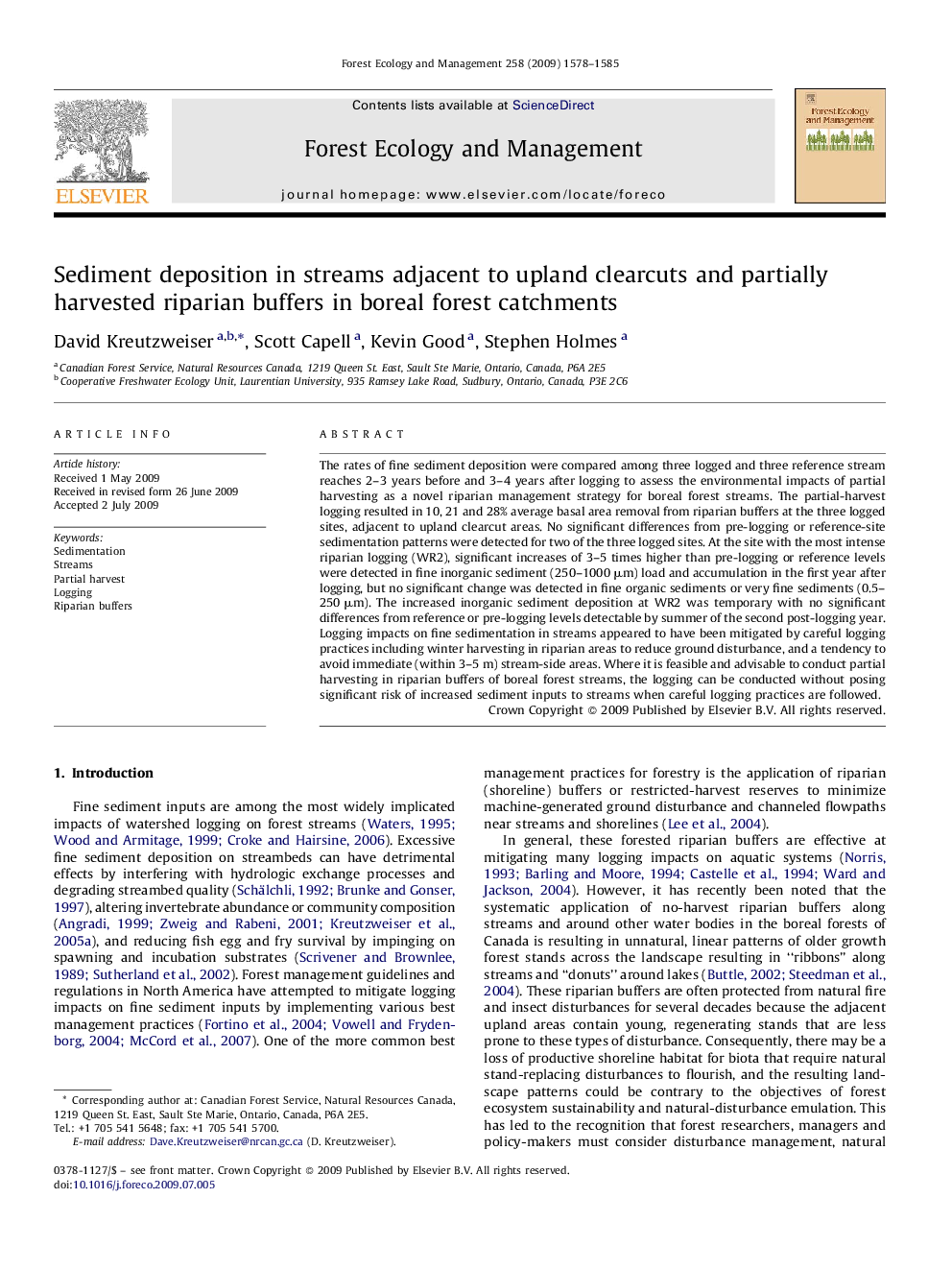| Article ID | Journal | Published Year | Pages | File Type |
|---|---|---|---|---|
| 88997 | Forest Ecology and Management | 2009 | 8 Pages |
The rates of fine sediment deposition were compared among three logged and three reference stream reaches 2–3 years before and 3–4 years after logging to assess the environmental impacts of partial harvesting as a novel riparian management strategy for boreal forest streams. The partial-harvest logging resulted in 10, 21 and 28% average basal area removal from riparian buffers at the three logged sites, adjacent to upland clearcut areas. No significant differences from pre-logging or reference-site sedimentation patterns were detected for two of the three logged sites. At the site with the most intense riparian logging (WR2), significant increases of 3–5 times higher than pre-logging or reference levels were detected in fine inorganic sediment (250–1000 μm) load and accumulation in the first year after logging, but no significant change was detected in fine organic sediments or very fine sediments (0.5–250 μm). The increased inorganic sediment deposition at WR2 was temporary with no significant differences from reference or pre-logging levels detectable by summer of the second post-logging year. Logging impacts on fine sedimentation in streams appeared to have been mitigated by careful logging practices including winter harvesting in riparian areas to reduce ground disturbance, and a tendency to avoid immediate (within 3–5 m) stream-side areas. Where it is feasible and advisable to conduct partial harvesting in riparian buffers of boreal forest streams, the logging can be conducted without posing significant risk of increased sediment inputs to streams when careful logging practices are followed.
